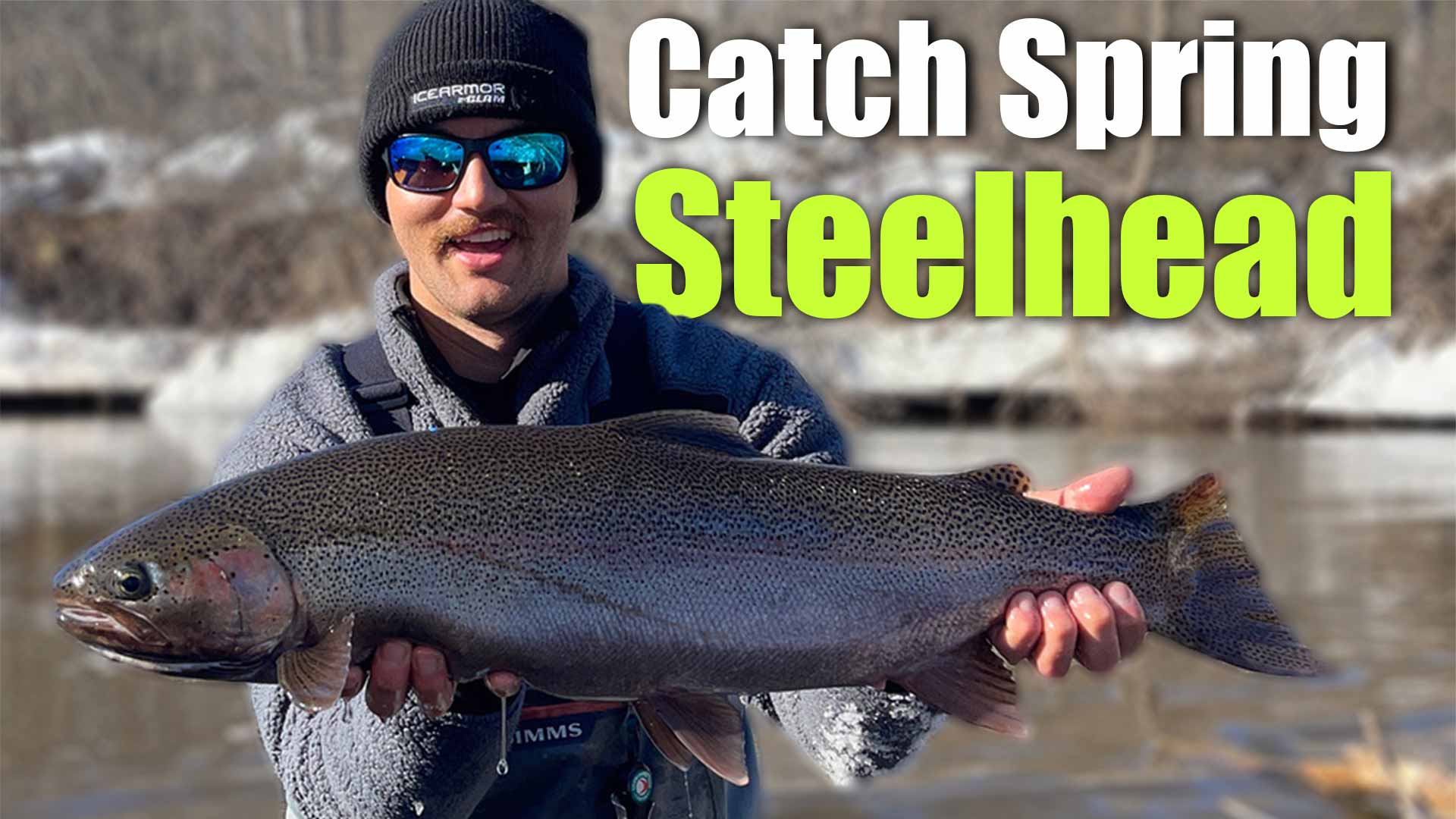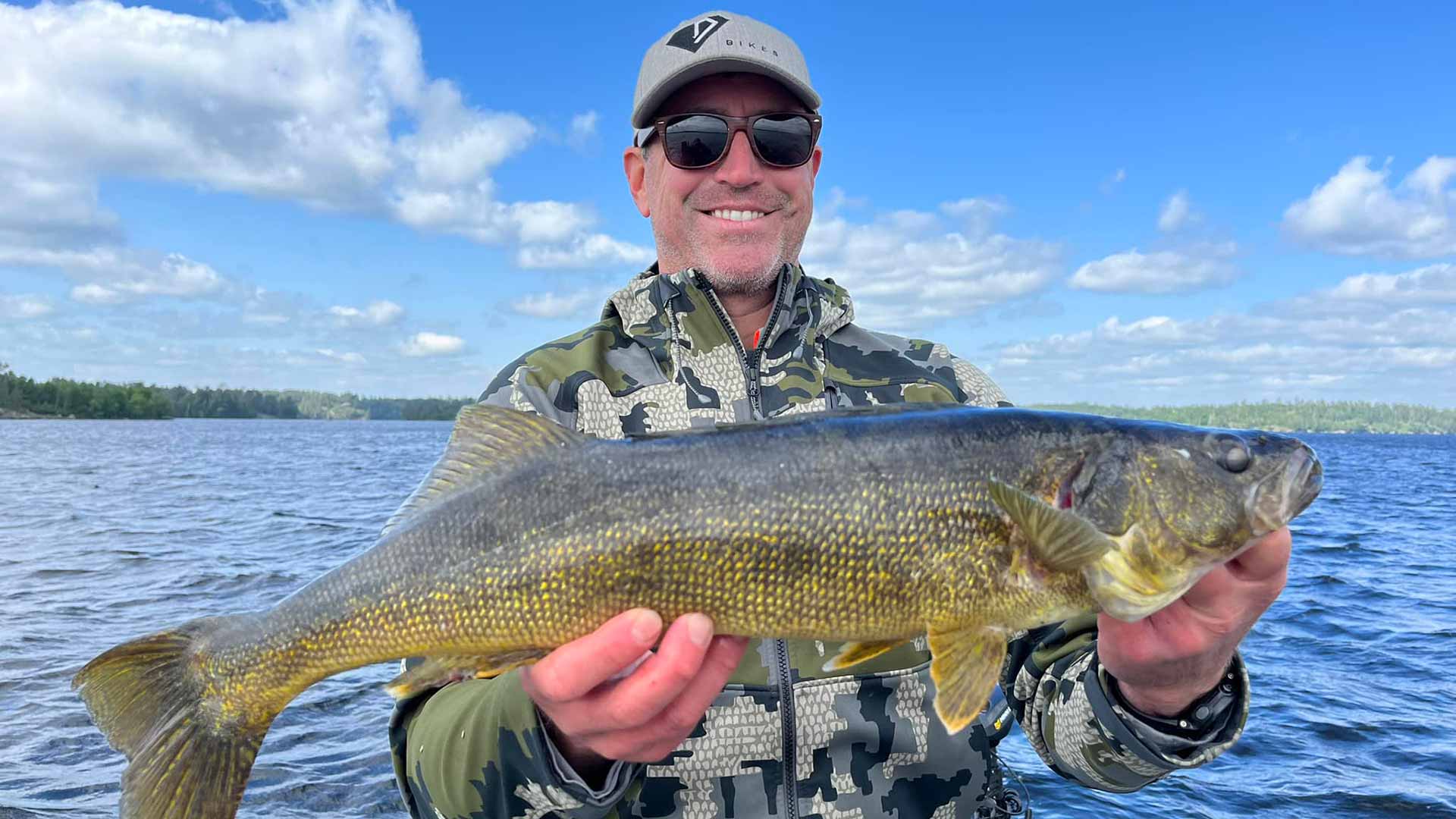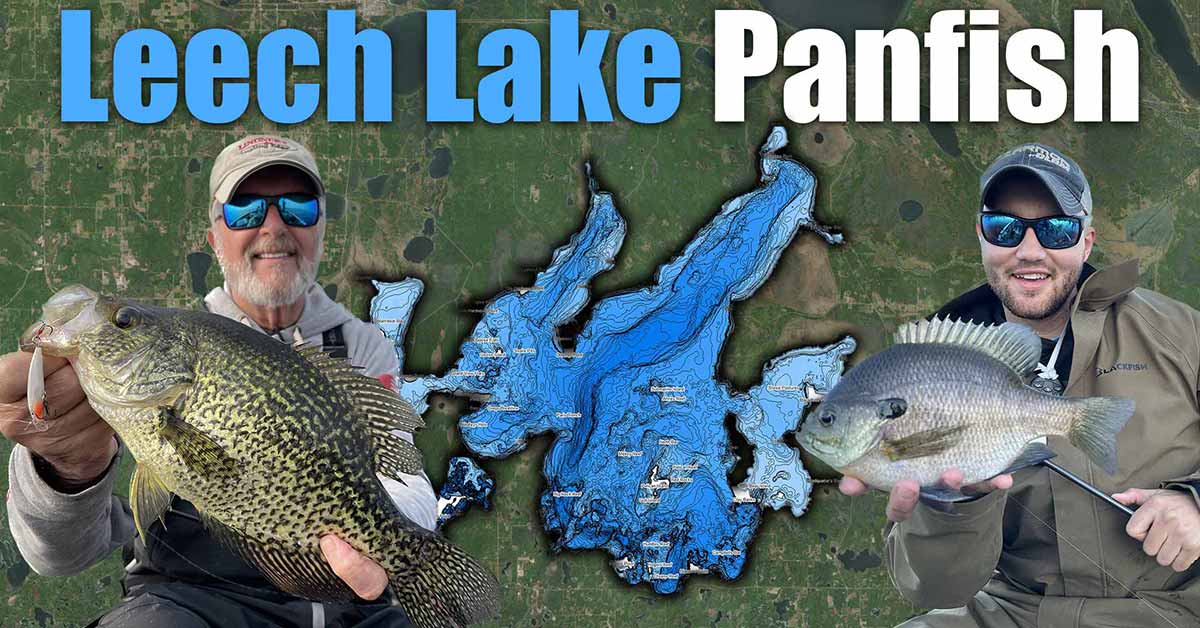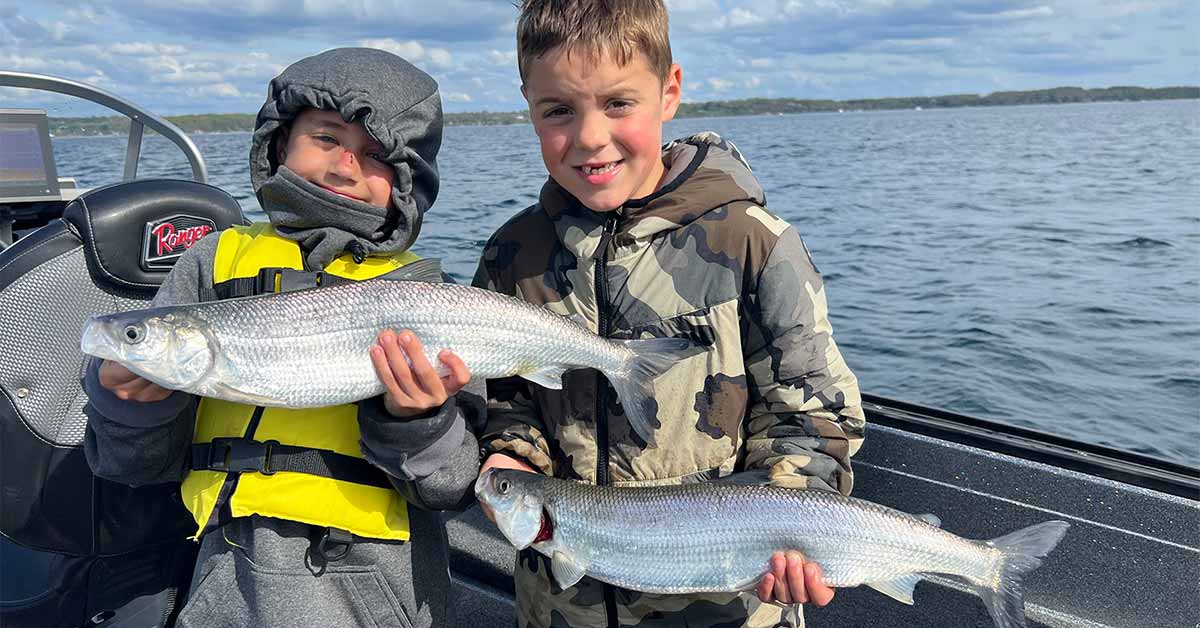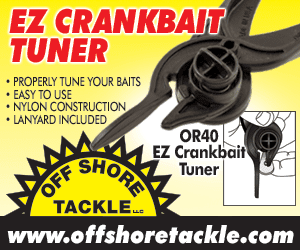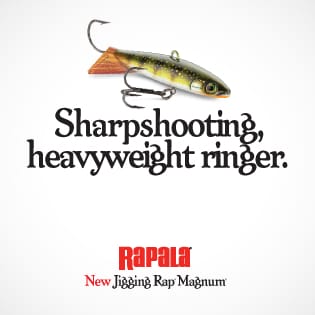How to Catch Spring Steelhead
As the snow begins to melt and the rivers start to rise steelhead begin their annual migration to their spawning grounds. This is one of the best times to try and catch spring steelhead. Look for current breaks, wing dams, rocky runs, and deep holes, as these are prime locations for steelhead. Those are the areas where steelhead will congregate and feed during their upstream migration and are the best areas to catch spring steelhead consistently.

Locations to Catch Spring Steelhead
The steelhead’s native range is in the Pacific Northwest, from Northern California to Alaska. Historically, steelhead had strong runs in most of the tributaries along the coast. Due to a number of environmental issues, native steelhead numbers have declined, but efforts are being made to improve the runs along the West Coast.
Steelhead are present throughout the Great Lakes region and provide excellent opportunities for anglers. Stocking began in the late 1800s, and now steelhead can be caught from Lake Superior to Lake Ontario. However, they are not ocean-run fish; these steelhead make annual runs from the Great Lakes they inhabit into many of the rivers and creeks that flow into them.
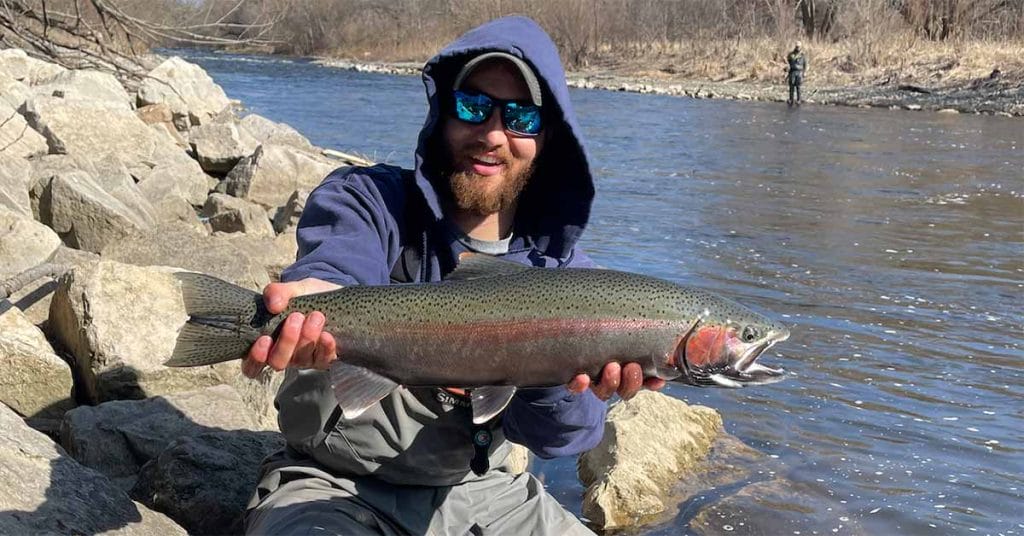
Baits to Catch Spring Steelhead
Steelhead are opportunistic predators that feed on a variety of forage. Small baitfish, invertebrates, and fish eggs are all fair game and commonly consumed by steelhead and trout alike.
When targeting steelhead in spring, it’s important to match your bait with what the fish are feeding on. There are several baits that work exceptionally well. Spawn sacs, beads, spinners, plugs, worms, jigs, and numerous fly patterns are great options for springtime steelhead. Steelhead a very visual feeders and color can make a big difference. It’s important to have several different color options when fishing the rivers. Sometimes a simple change in color can make all the difference.
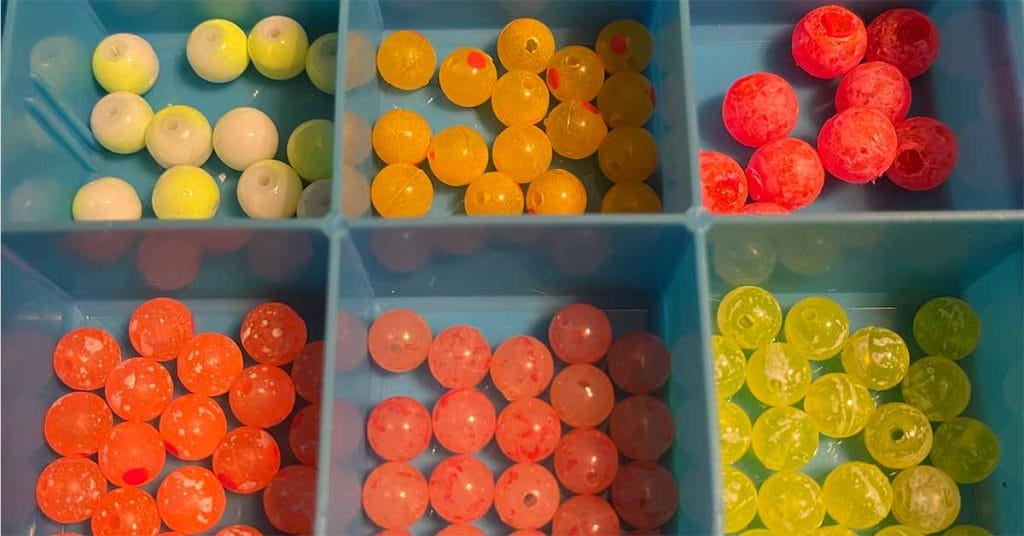
Techniques to Catch Spring Steelhead
Float fishing is the most common approach to catching spring steelhead. It’s a versatile method in which the angler can adjust the float depending on the river conditions and water depth. Float fishing allows the angler to present their bait in a natural way as it floats along with the current. It also allows the angler to use a number of different baits, such as spawn sacs, beads, worms, and jigs. Float fishing is well suited for deep holes, long runs, and fishing near structures like log jams.
Centerpin fishing is another productive method for targeting spring steelhead and is very common in the Great Lakes region. Centerpin reels are designed specifically for float fishing and allow for precise control over your presentation. Most anglers use beads, worms, or spawn sacs when using centerpining set-ups. It’s important to constantly adjust the height of your float to ensure that your bait is always in the strike zone. In most cases, your bait should be within a foot of the bottom.
Bottom bouncing is a technique commonly used by anglers to fish fast-moving runs and areas that are not well suited for floats. Bottom bouncing involves casting a weighted rig along the river bottom, allowing the bait to bounce and move with the current. Popular baits for bottom bouncing include spawn sacs, beads, and yarn flies. It’s important to adjust the weight of your bottoming bouncing rig depending on the current and water level. The closer you are to the bottom, the more bites you’ll get.
Fly fishing is another popular and effective tactic for catching spring steelhead. Most anglers opt to use a seven- to nine-weight fly rod. Streamers, egg patterns, nymphs, and stoneflies are popular flies for steelhead. These four types of flies are effective in all the different bodies of water that steelhead inhabit.
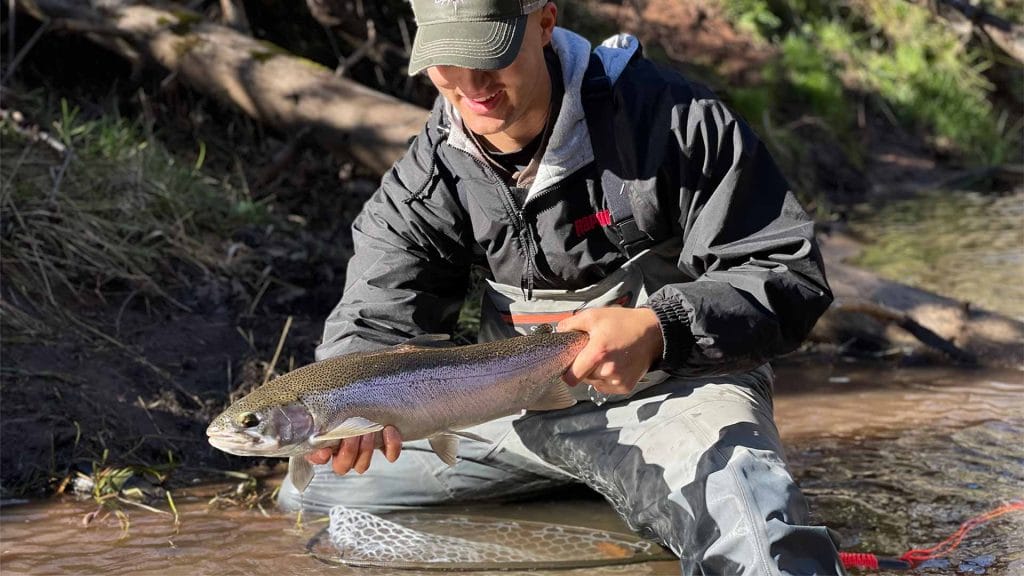
Gear to Catch Spring Steelhead
Steelhead rods come in a variety of lengths, powers, and actions. Most anglers prefer a rod between nine and eleven feet in length. A rod that length range helps deliver long casts, and makes mending line along current seams and cover much easier.
A good steelhead reel needs an ultra-smooth drag system and is preferably in a 3000 or 4000 size. A larger reel is beneficial because it has a large line capacity and, more importantly, can pick up line quickly. A good drag is also a must. Having a good drag system is essential because steelhead are strong, acrobatic fighters that can make incredible runs.
Steelhead have excellent eyesight, so a six—or eight-pound test fluorocarbon leader is critical for producing bites. The leader can be attached to a main line of 10—to 20-pound-test floating braid via a small barrel swivel. I recommend using a mainline that is a high-visibility color. This makes it easier to see your line on the top of the water and will allow you to mend the line as your presentation moves downstream.

FAQ’s
1. Are steelhead a rainbow trout?
Yes. They are rainbow trout that inhabit the ocean or Great Lake for most of their lives and spawn in freshwater tributaries.
2. What is the best month to catch spring steelhead.
February through April tend to be the peak spring steelhead season; however, in some places, you can catch spring steelhead into late May.
3. What time do steelhead bite best?
The best bite is usually mid-morning till early afternoon, however you can catch spring steelhead all throughout the day.
4. What is the best color bait for steelhead?
Orange, pink, chartreuse, and red are the best steelhead colors.
5. What water temperatures do steelhead spawn at?
Steelhead spawn when water temperatures reach the low forties, typically between forty and forty-three degrees.
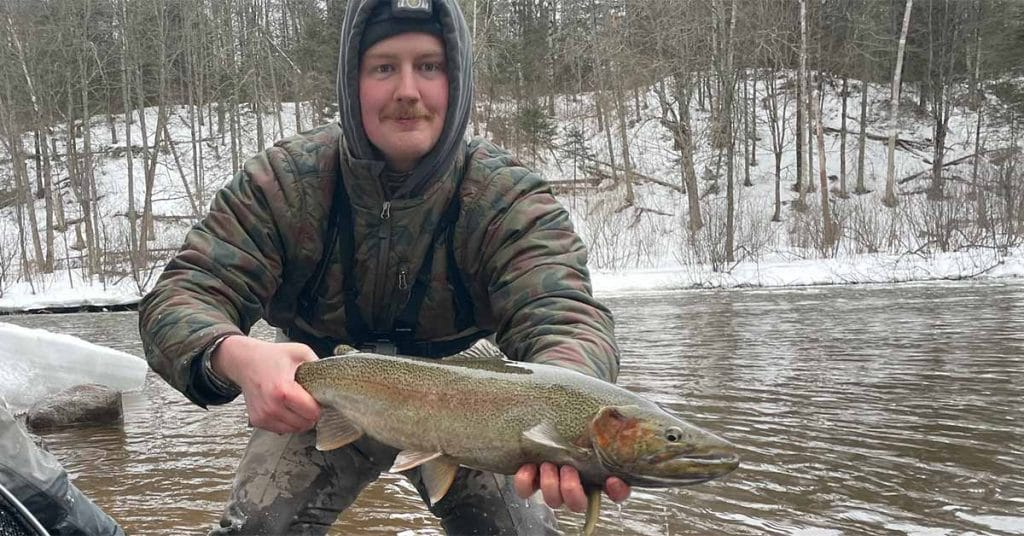
Conclusion
Steelhead have been dubbed “the fish of 1,000 cast” because of their elusive nature and fighting ability. That reputation is well deserved; however, with a proper steelhead setup and an understanding of where these fish like to position in the river, it can be easy to catch spring steelhead.
